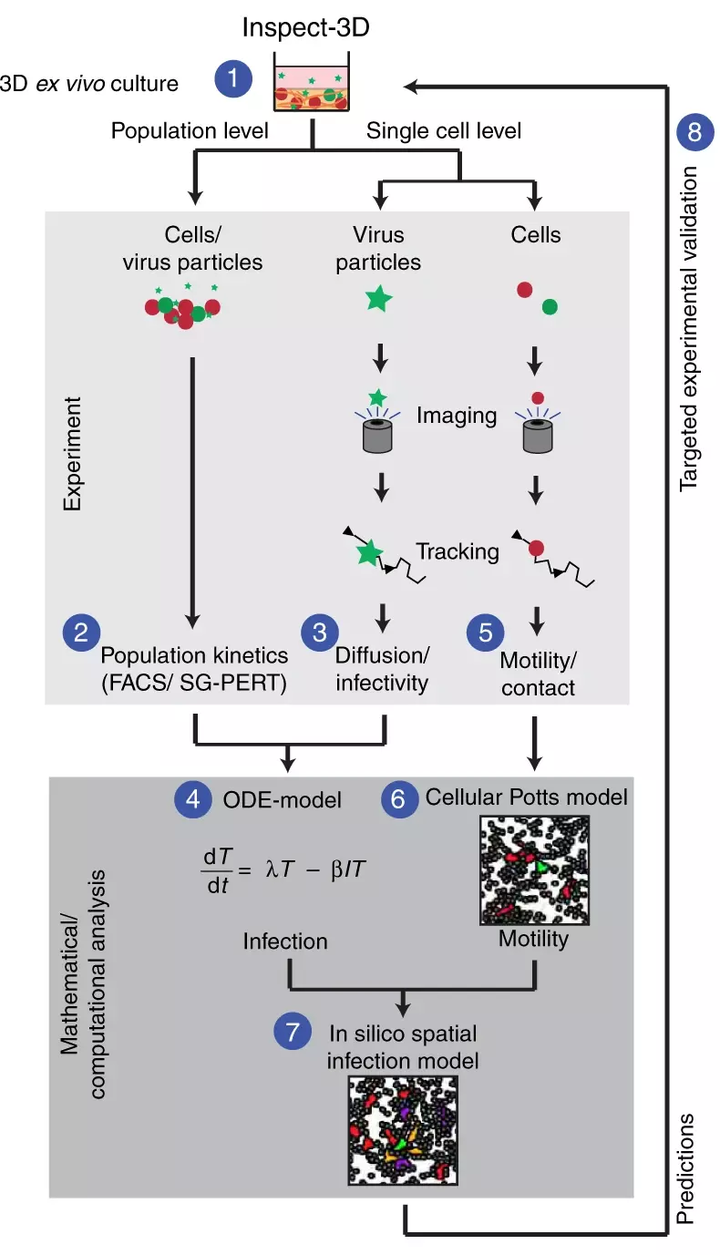Experimental and computational analyses reveal that environmental restrictions shape HIV-1 spread in 3D cultures
 CC BY 4.0: Andrea Imle, Peter Kumberger, Nikolas D. Schnellbächer, Jana Fehr, Paola Carrillo-Bustamante, Janez Ales, Philip Schmidt, Christian Ritter, William J. Godinez, Barbara Müller, Karl Rohr, Fred A. Hamprecht, Ulrich S. Schwarz, Frederik Graw, Oliver T. Fackler
CC BY 4.0: Andrea Imle, Peter Kumberger, Nikolas D. Schnellbächer, Jana Fehr, Paola Carrillo-Bustamante, Janez Ales, Philip Schmidt, Christian Ritter, William J. Godinez, Barbara Müller, Karl Rohr, Fred A. Hamprecht, Ulrich S. Schwarz, Frederik Graw, Oliver T. Fackler
Abstract
Pathogens face varying microenvironments in vivo, but suitable experimental systems and analysis tools to dissect how three-dimensional (3D) tissue environments impact pathogen spread are lacking. Here we develop an Integrative method to Study Pathogen spread by Experiment and Computation within Tissue-like 3D cultures (INSPECT-3D), combining quantification of pathogen replication with imaging to study single-cell and cell population dynamics. We apply INSPECT-3D to analyze HIV-1 spread between primary human CD4 T-lymphocytes using collagen as tissue-like 3D-scaffold. Measurements of virus replication, infectivity, diffusion, cellular motility and interactions are combined by mathematical analyses into an integrated spatial infection model to estimate parameters governing HIV-1 spread. This reveals that environmental restrictions limit infection by cell-free virions but promote cell-associated HIV-1 transmission. Experimental validation identifies cell motility and density as essential determinants of efficacy and mode of HIV-1 spread in 3D. INSPECT-3D represents an adaptable method for quantitative time-resolved analyses of 3D pathogen spread.